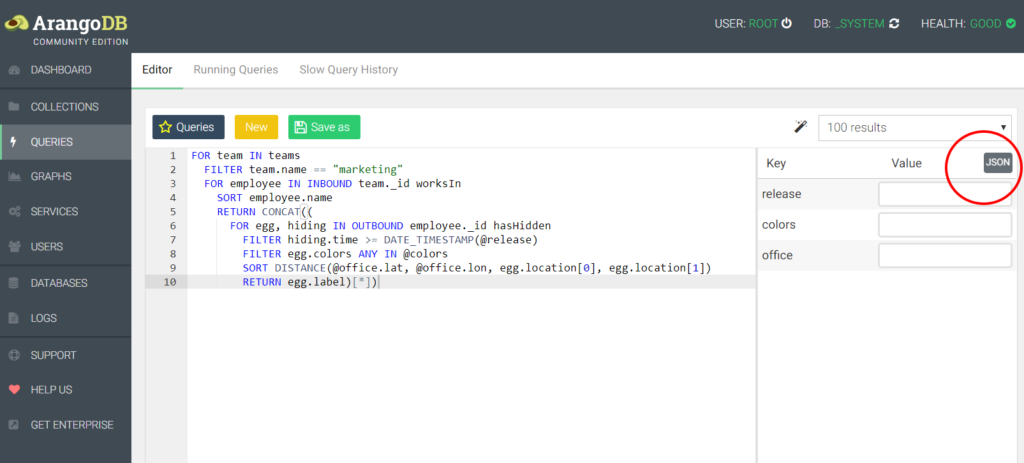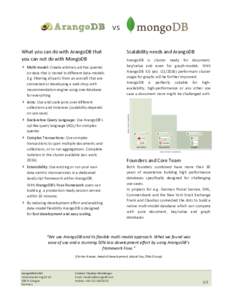



ArangoDB implements edges and vertices as JSON documents, with a from and to relationship in the case of edges. Next I could put detailed circuit information and contacts into an associated JSON document and be able to pull up information along the way–e.g. If we wanted to see which datacenters were available via private circuits and the associated shortest path, this would be doable within this scheme much more efficiently versus a traditional RDBMS. At this point a graph can be created and queried along the edges. This allows for the import of the circuits into an edge collection, and the datacenters into a vertex collection. For a quick initial demo I created a very simple collection of datacenters and circuits:
#Arangodb sharding how to#
I attended a presentation on ArangoDB at some point and went on to dabble with an ArangoDB instance to learn how to load graph data formatted in the Graph Modeling Language (GML).Īrangodb has some nice sample data and tutorials to get users started setting up collections and querying with their custom SQL-like query language called AQL. Given the past discussion of graphing with networkx, I thought it may be interesting to think about how to persist data out-of-memory with a graphing database such as ArangoDB. To my knowledge one has to actually come up with the community scheme and then re-arrange the shards accordingly–it is not dynamic. The commercial entity behind Enterprise ArangoDB support is a German company out of Cologne that is currently looking to re-locate it’s HQ in the US.ĪrangoDB is parallizable via sharding much in the model of Mongo however an interesting feature is the ability to base shards on communities in the case of graphs–hence minimizing network overhead when following paths, looking for neighbors, etc. ArangoDB is a notable NoSQL database system that may be of interest to security and other informatics specialists that need to scale document collections (JSON), graphs, or name/value pairs–any or all in one implementation.


 0 kommentar(er)
0 kommentar(er)
